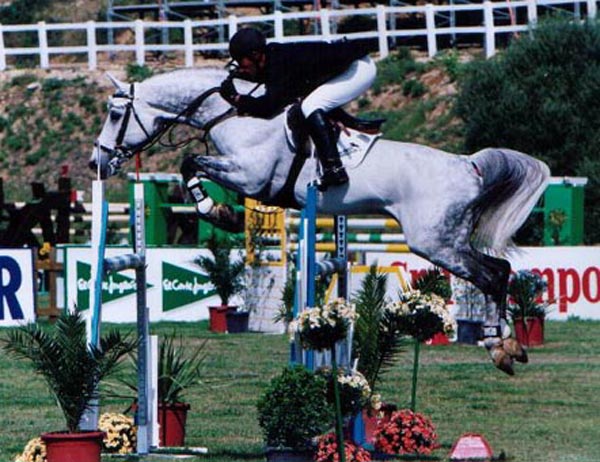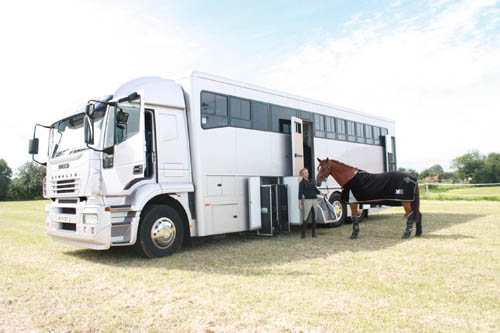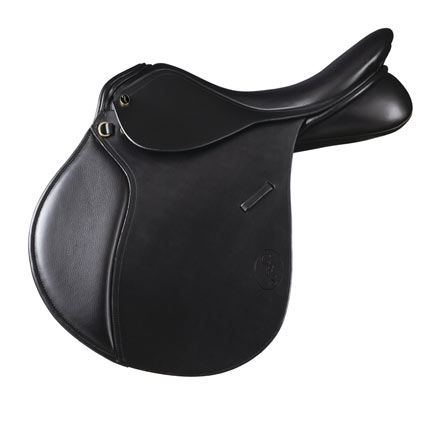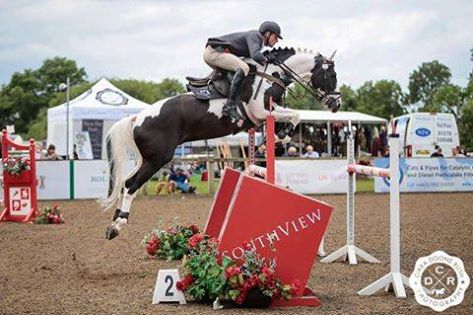Barb Horses
Developed on the Barbary Coast of North Africa, the Barb is a desert horse with great hardiness and stamina. Due to the amount of cross-breeding, it is difficult to find a purebred Barb today. The Barb generally possesses a fiery temperament and an atypical sport-horse conformation, but nevertheless has had an incredible impact on today's modern breeds.The Barb is a light riding horse with great stamina. It has a powerful front end, high withers, short back, a sloping, narrow croup, and carries its tail low. It is hardy with clean legs, and small, round, sound hooves. It does not have particularly good gaits, but gallops like a sprinter; this has influenced racing breeds such as the Thoroughbred, American Quarter Horse, and Standardbred
It is not exactly known where the Barb developed; some believe the breed originated in northern Africa during the 8th century, about the time that Islamic invaders reached the region. There is considerable controversy over whether the Barb and Arabian horses share a common ancestor, or if the Arabian was a predecessor of the Barb. It is possible that the native horses of the region were influenced by the crossing of multiple "oriental" breeds (including the Arabian horse, Turkmenian or Akhal-Teke, Caspian horse) with Iberian horses brought back from Europe by the Moorish invaders after they conquered southern Spain. Today there are several varieties of Barb including the Algerian, Moroccan, and Tunisian.
When imported to Europe they were sometimes mistaken for Arabians, even though they have distinctly different characteristics – in part, because their handlers were northern African Muslims who spoke Arabic. The Godolphin Arabian, one of the foundation sires of the Thoroughbred, was actually an Arabian stallion but (due to his Moroccan origins) was referred to as the Godolphin Barb.
The Barb is now bred primarily in Morocco, Algeria, Spain and southern France, although due to difficult economic times in its homeland the number of purebred Barbs is decreasing. The World Organization of the Barb Horse, founded in Algeria in 1987, was formed to promote and preserve the breed. However, due to the political situation it is difficult to say how much of an increase in numbers or purity the breed will have.
Although it is unlikely that the breed's true origins will ever be known, the Barb may have had more influence on the racing breeds throughout the world than any other horse except the Arabian.
As with the Arabian, it was the spread of Islam which led to the forerunners of today's Barbs reaching Europe from the early eighth century onwards. Once established on the Iberian peninsula, the Barb horse played a major role in the development of the Andalusian (and the Lusitano), which subsequently became one of the major influences in horse breeding all over the world.
Among the many historical references to "Barbary" horses perhaps the most famous is Roan Barbary, who belonged to King Richard II of England. During the 16th century Henry VIII imported a number of Barbary horses into England, and a century later the Barb played an important part in the evolution of the Thoroughbred. The influence of the Barb is still evident in the Argentinian Criollo, the Paso Fino, and many other Western Hemisphere breeds (including the American Quarter Horse, the Mustang and the Appaloosa).
Despite its importance as a progenitor of other breeds the Barb has achieved less widespead renown than the Arab – no doubt because it lacks the Arabian horse's unique visual appeal, being much less refined and generally less impressive in appearance. Nevertheless it has the same boundless stamina and endurance, the same ability to thrive on meagre rations, the same sure-footedness and impressive turn of speed over short distances.
The Abaco Barb is an endangered strain of the Spanish Barb horse breed which resides on Great Abaco Island, in the Bahamas. The Abaco Barb is said to have descended from horses which had been shipwrecked on the island during the Spanish colonization of the Americas and the Caribbean. The entire population of wild Abaco Barbs that run free on Great Abaco once numbered over 200 horses. However, beginning in the 1960s several events took place that led to the breed's severe decline from over 200 horses to just three individuals – the paving of new roads through or near their territory, wild dog attacks on foals, and retaliatory killing as a result of an accident involving a child.
Several Abaconians intervened, opposing the slaughter, and brought the three horses to a farm near Treasure Cay. The herd increased to 35; however, since 1992 over half the horses have died. No foals have been born since 1998, although there was one spontaneous abortion and one fetus aborted for unknown reasons. By early 2010, the herd has diminished to six individuals. As of October 2010, only five remain - three mares living inside the preserve, and two stallions living outside. Recently there has been an effort to help preserve the breed (one of the remaining stallions, Capella, was made into a Breyer horse in 2005). Since the breed is critically endangered, no Abaco Barb horses will be sold on the commercial market; instead, the remaining herd will run free on the 3,800-acre (15 km2) preserve on Abaco. The Abaco Barb is found in different colors than the European/African Barb, including pinto (including the relatively-uncommon splashed white), roan, chestnut, black and other colors. They range between 13 to 14.2 hands (52 to 58 inches, 132 to 147 cm).



Equestrian Clearance - Winter Turnout Rugs | Stable Construction | Event Horses | Event Horses | Horse Websites



